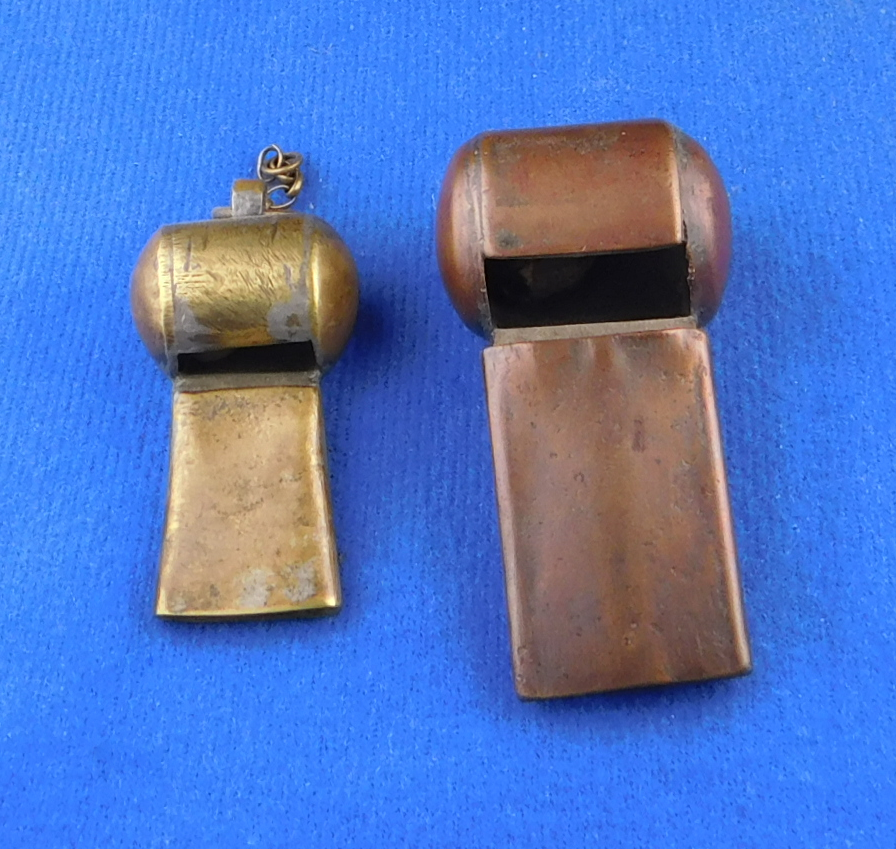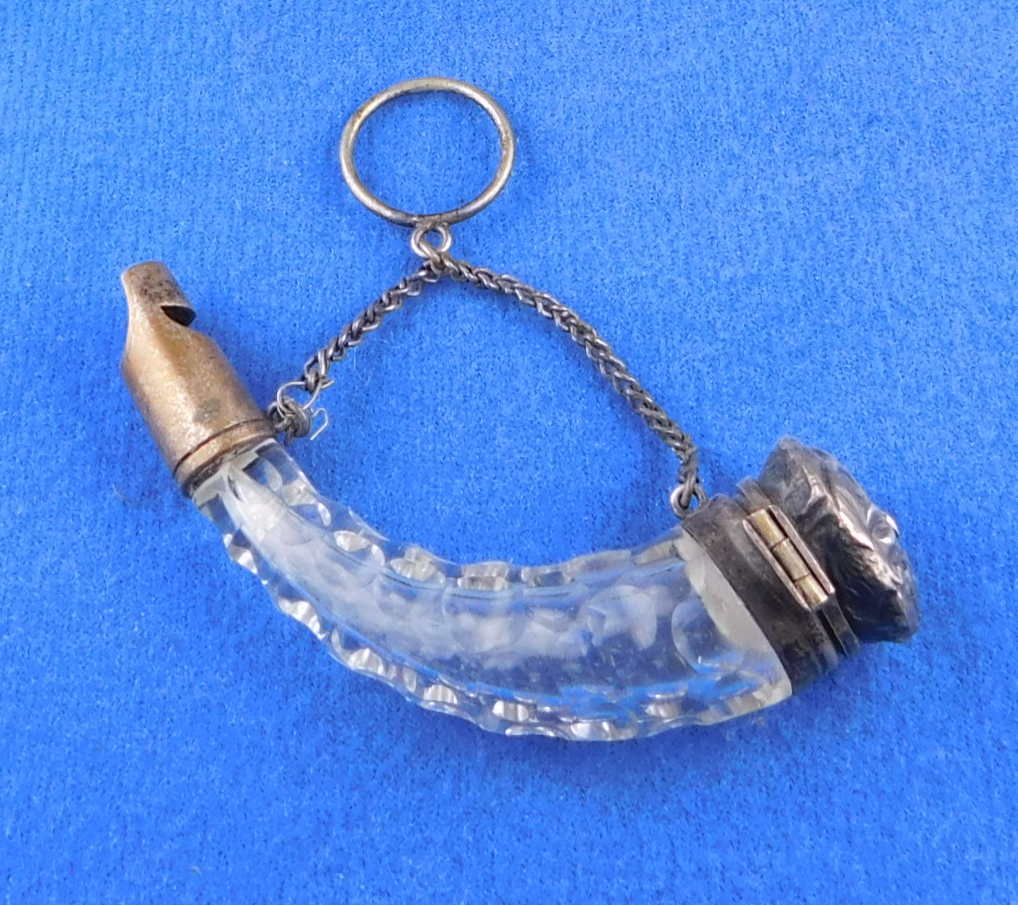Whistory
The history of patent 435, 1885 is recorded in Collecting Police Whistles by Simon Topman and Martyn Gilchrist on page 91.
Simply put, it was ‘developed as a result of widespread mechanical failure of the simple disc diaphragm’. We want to examine why it failed and what was changed, how much was it further changed and then for this particular SPOTLIGHT, what whistles utilized it?
The initial order of metropolitan tube-shaped police whistles used a flat disc attached perpendicular to a partition and the disc would come loose, therefore, Joseph Hudson added what he called strengthening-fangs, or, what we now call – tines. With two tines added (also) perpendicular to the disc and soldered to the sidewalls. By thus doing so, the disc consequently would stay in place.
Patent 435, the Earliest Stamps Seen with J. Hudson & Co.
In the earliest discs, the “J. Hudson & Co.” stamp was seen through the window on one side and then a second stamp “patent“ through the window on the other side. These could be seen by looking from the top ring end downwards into the windows, the two tines reached downwards towards the mouthpiece, later the tines would reach the opposite direction towards the ring end and each be split with the stamp only seen looking into the mouthpiece opening.
This later change of tine construction and direction would occur about 1898-99, then the stamping on the disc changed from one side to the other side and that lasted 1898 to 1907. See More Whistles page 58.
Our focus is on the entire time of 1885 to 1909 the year of the 1909 patent for round whistles, because of the patent 553 for the three-point attachment on the fipple.
Patent 435 Focuses on the Flat Disc in Conical Whistles
Why so lengthy a time period, 24 years? Because the flat disc used for patent 435, would be adapted to use in conicals, large and mediums and possibly round whistles. Conclusively, it would not be limited in use to just the tube-shaped Metropolitan Police whistle, but would include the King whistle, mid-sized and smaller beaufort/conical whistles — and possibly adapted to round whistles made by Joseph Hudson.
Pointedly, Kings would be stamped for this patent on the whistle and the disc just like the tube-shaped whistles in 1885. However, it has been found that the majority if not all others, following the initial year of the large Kings conicals are stamped for this patent and do not have the disc. However, they still utilized the standard wedge diaphragm. In fact, it may be that all Kings stamped patent or not continued to use wedge type diaphragms after its initial use.
No round whistles have been found stamped patent (for 435) on the whistle, nor on the flat discs. Why do most Kings whistles have patent (for 435) stamped on them, yet use wedges and not discs? Is there a reason round whistles have a flat disc/fipple, but no patent for this major change? Why did Hudson change from wedges in conicals in general, yet revert back to wedges in Kings?
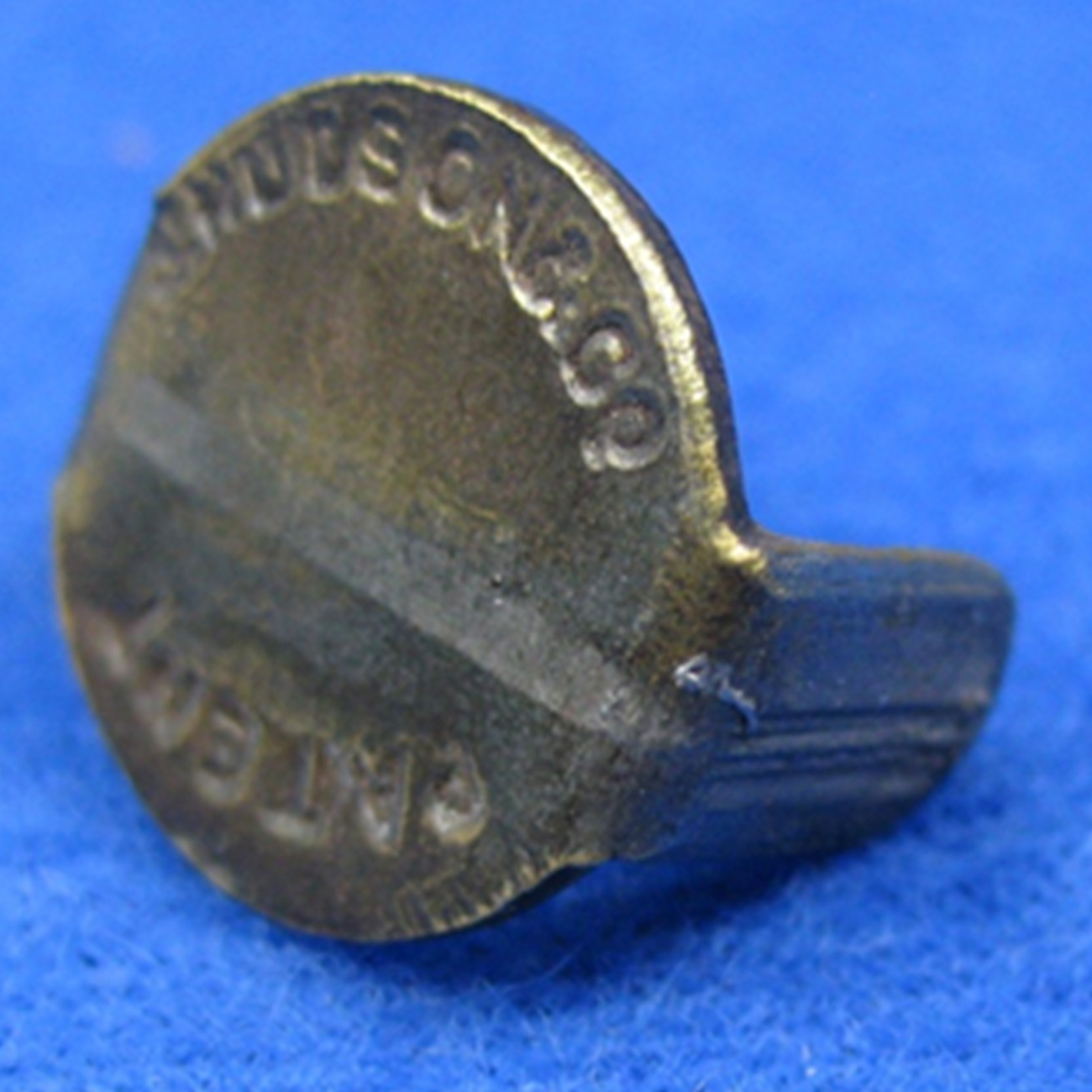
Whistle Classification
| Category | tube shaped beaufort/conical combination round |
| Order | Hudson (ie, Acme) |
| Type | railway police fire brigade GSW cycling |
| Class | nickel silver nickel plated brass |
| Sub class | patent 435 patent 553 |
Whistle Archeology
The original patent replacement for the simple disc.

(Patent research courtesy of Nigel Utting)
Patent description:
435. Hudson, J. January 13.
Whistles, police and similar. The internal sheet-metal disc or diaphragm a crossing the barrel is furnished with strengthening-fangs c which lie along the sides of the barrel and is secured by soldering.
Diaphragms started in 1885 for tube shaped whistles and then were adapted for the King whistles. They were thicker, but also had J. Hudson Co. stamped on them.
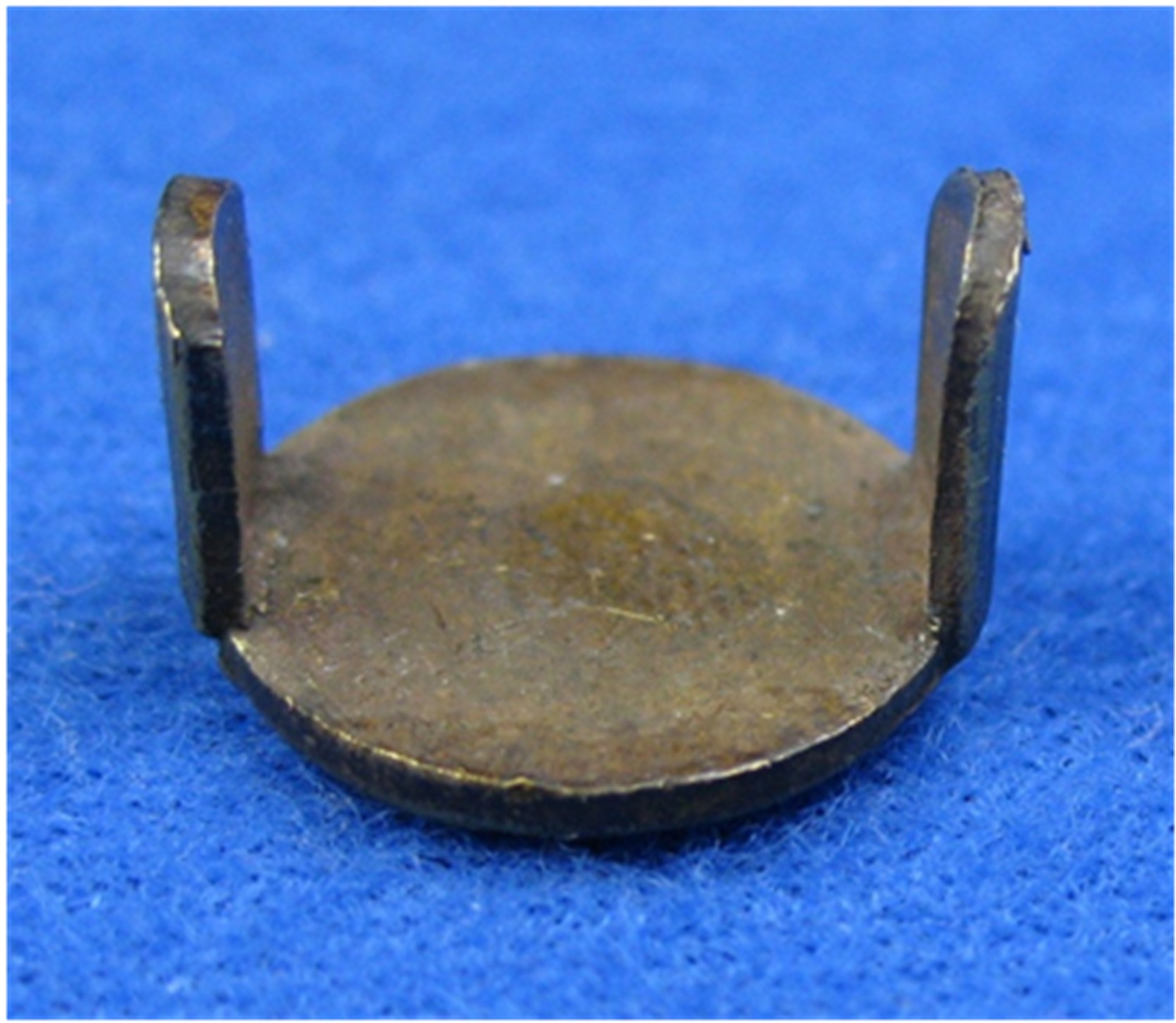
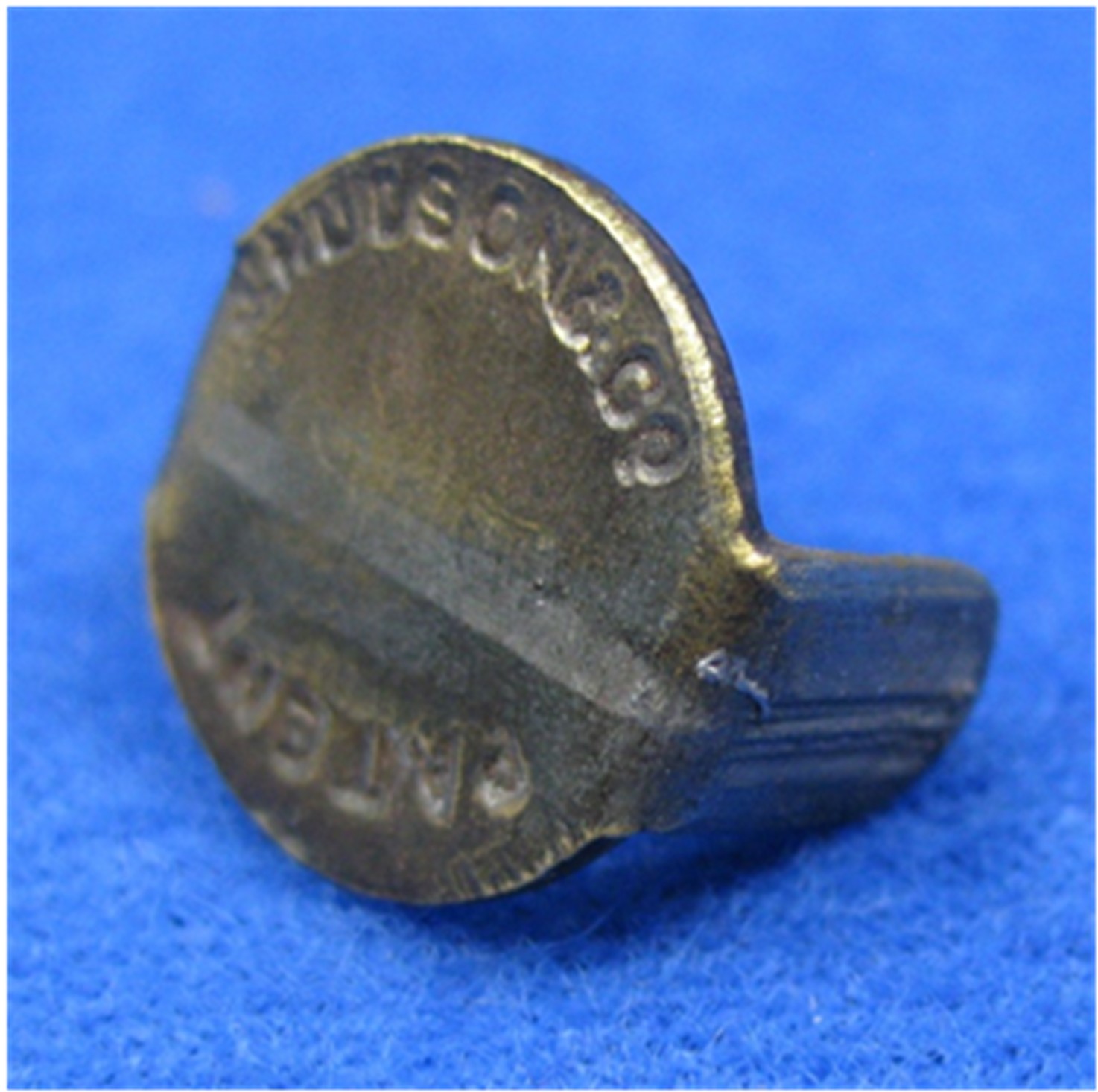
Wedge commonly used for beauforts/conicals.
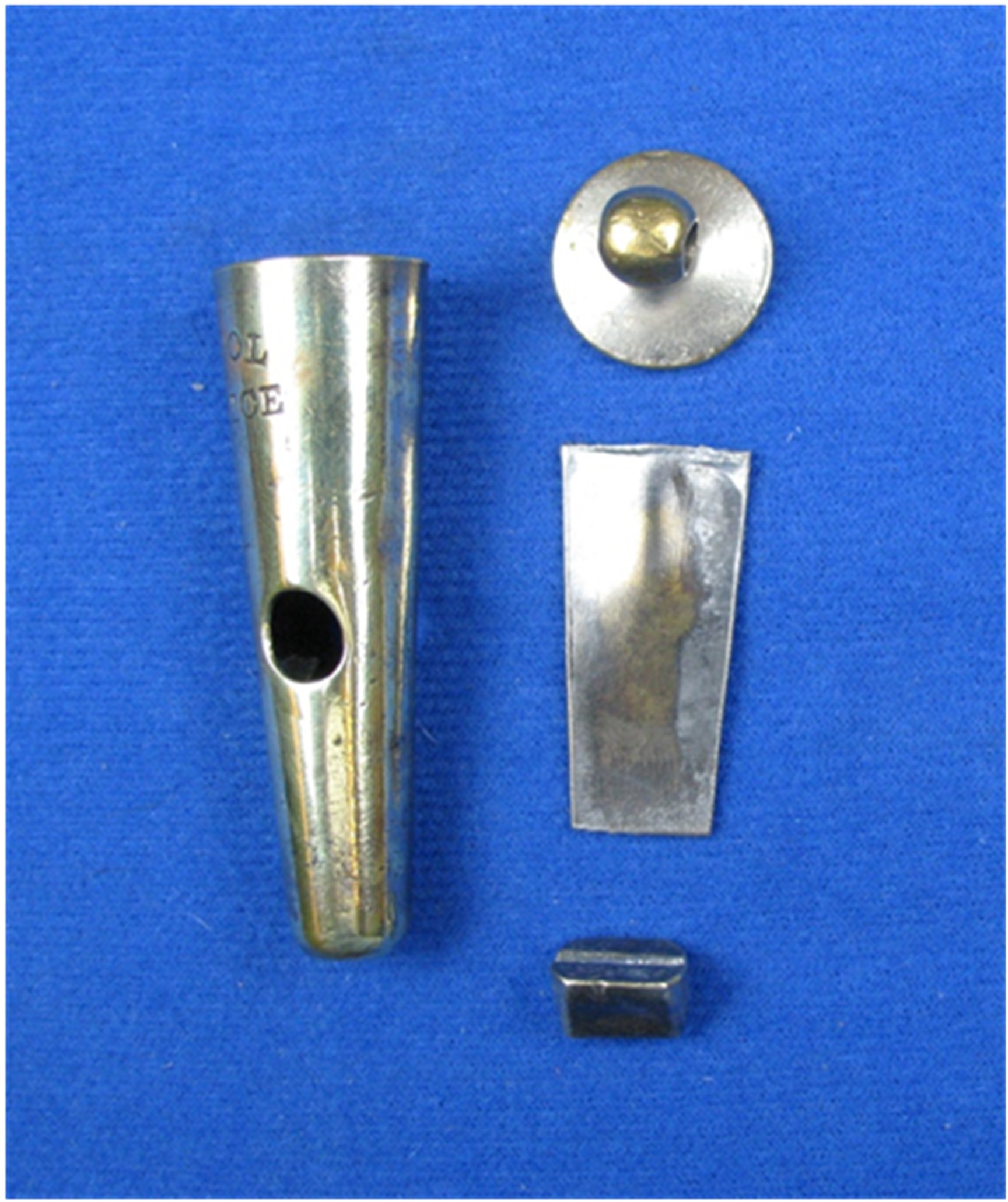
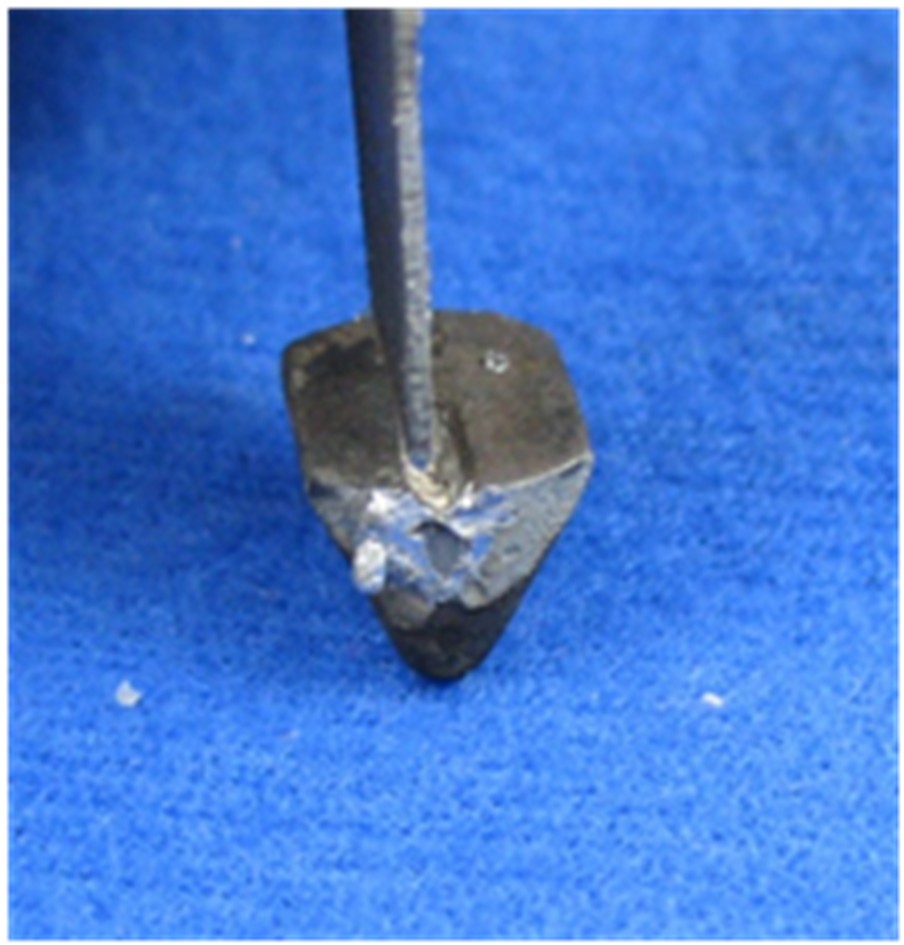
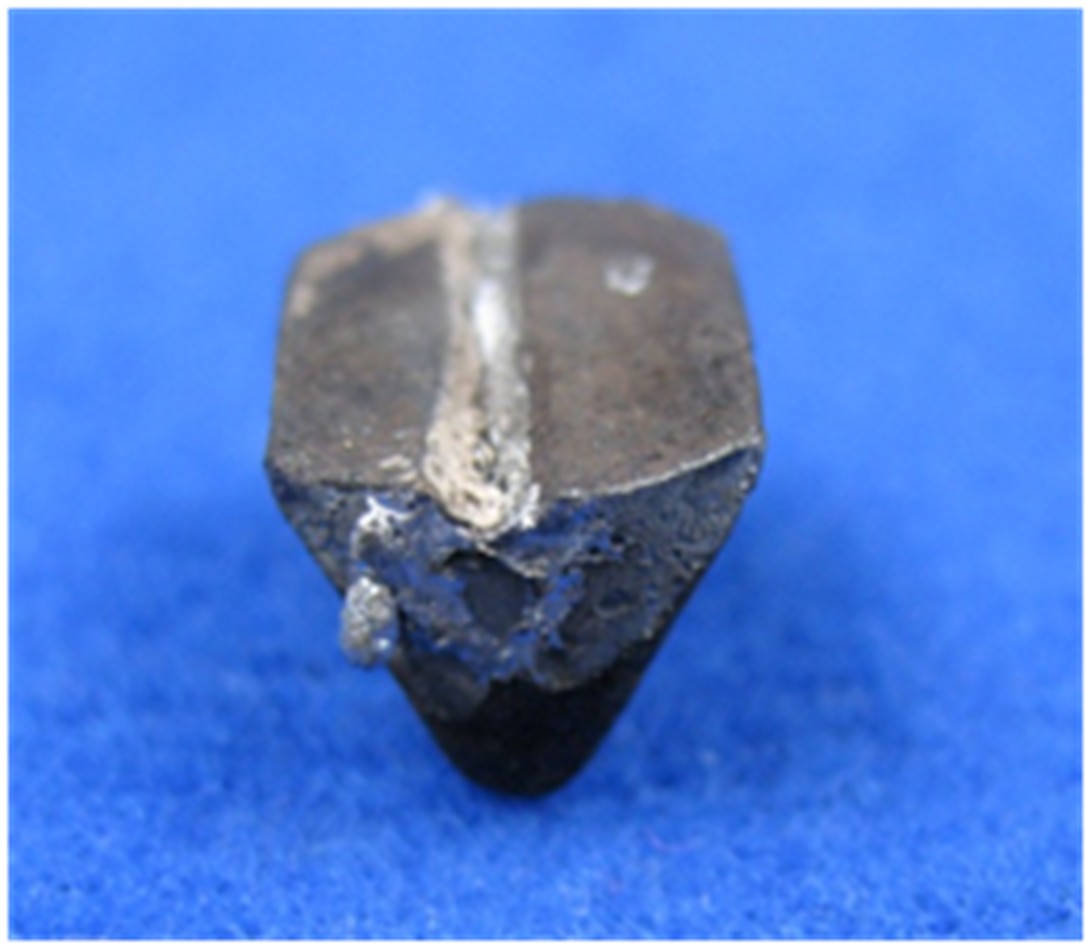
Martyn Gilchrist’s Thoughts on Patent 435
Upon asking Martyn Gilchrist why the large King whistles had PATENT stamped on them …
“The first ones I know about were made with Hudson’s first patent No.435, 1885-99. May I suggest you re-examine the ones you have and have another look at the diaphragm. All the ones from this period marked patent that I have seen have a very thick tapering disc diaphragm, maybe 2 or 3 times thicker than the ones on GSWs. Examining the diaphragm under a magnifying glass should reveal that the diaphragm is stamped ‘J Hudson & Co Patent’. Shine a torch up the mouthpiece and the underside should be flat and with perseverance the two tines projecting from the disc towards the mouthpiece should be seen.” – Regards, Martyn
TWG — The whistle illustrated on page 34 of More Whistles is constructed as above.
TWG — The matching whistle held at the TWG reference collection also has this construction.
More Whistles — On page 34 ‘The Kings Whistle Patent Shand Mason & Co. London’. Length 99mm, very rare. The ‘patent’ refers to Hudson first patent, a diaphragm design of 1885, number 435.
TWG — Three other King whistles held in the TWG reference collection stamped for the 435 patent, do not have discs, but have wedge diaphragms. These are followed in series by King whistles, not marked for the 435 patent, yet still utilizing wedge diaphragms — post 1885.
A flat disc was subsequently used for round whistles — was it another adaptation of patent 435 it has no tines attaching to sidewalls. However, it is a major departure from other round fipples.
No patent or design registration for this type of flat fipple design was ever registered.
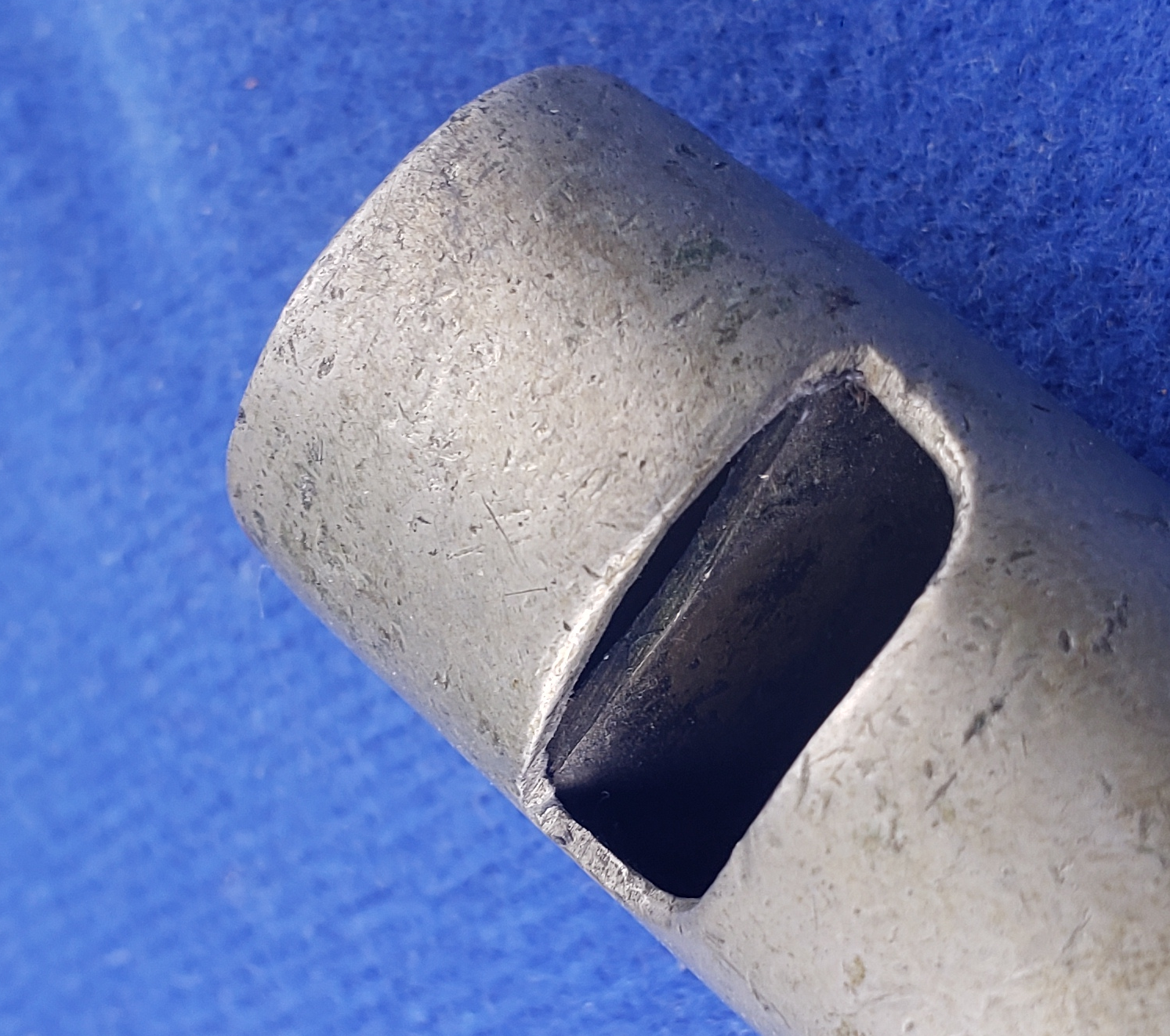
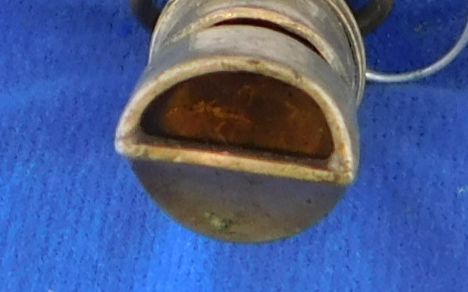
Whistology
Circa 1885 patent 435, the only year known to use this in King whistles.
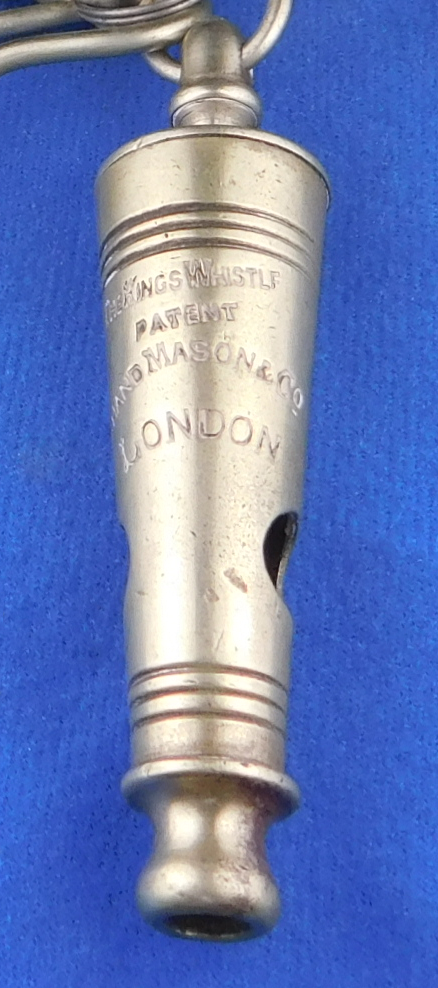
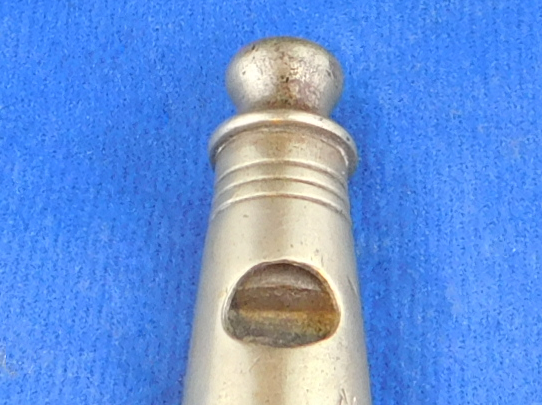
All three stamped for patent 435, yet using wedged diaphragms
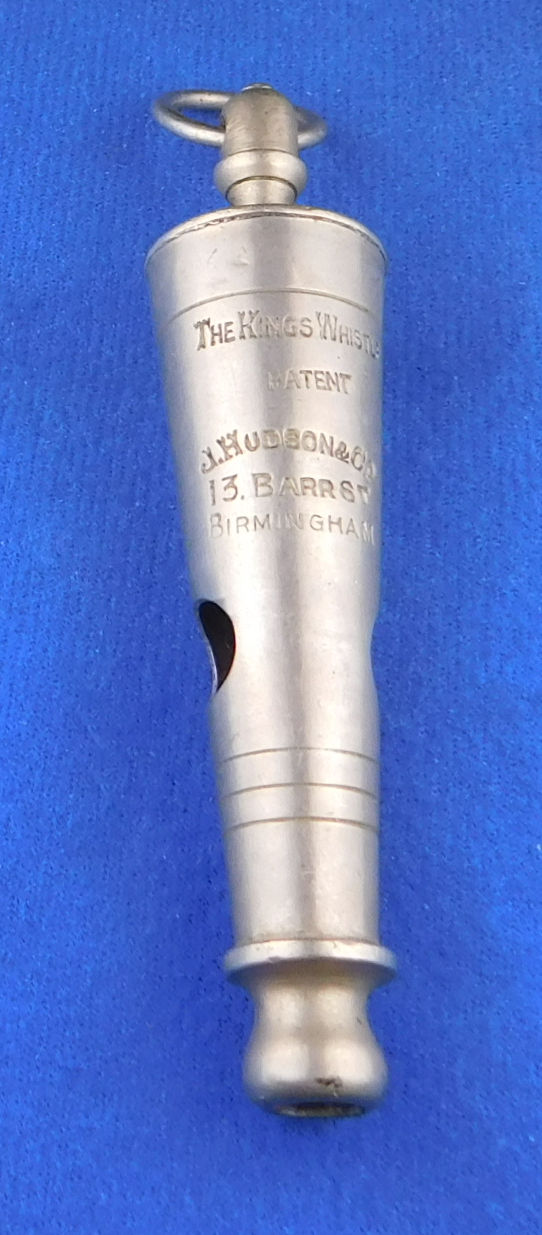 Truncated wedge like Dowler’s | 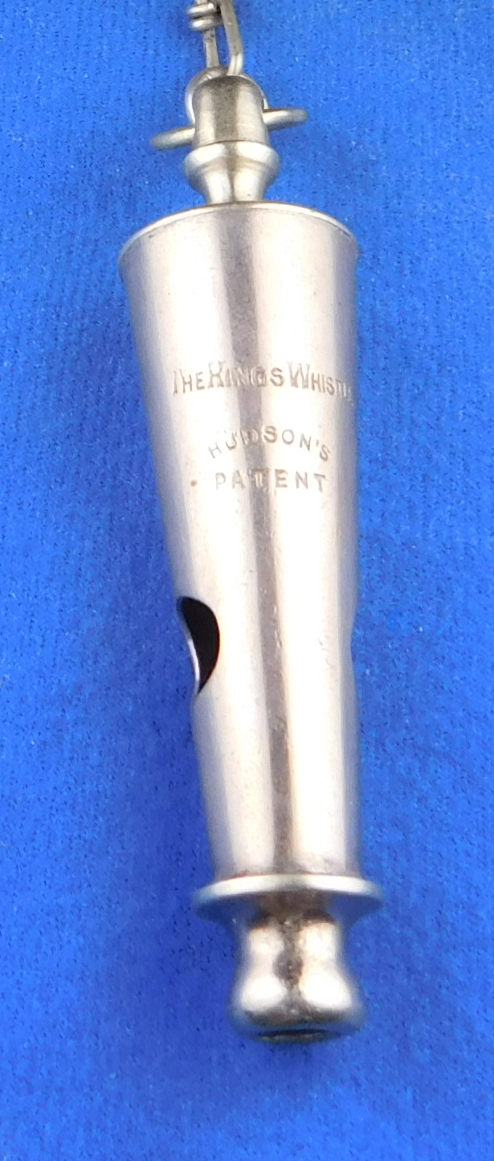 sharp wedge | 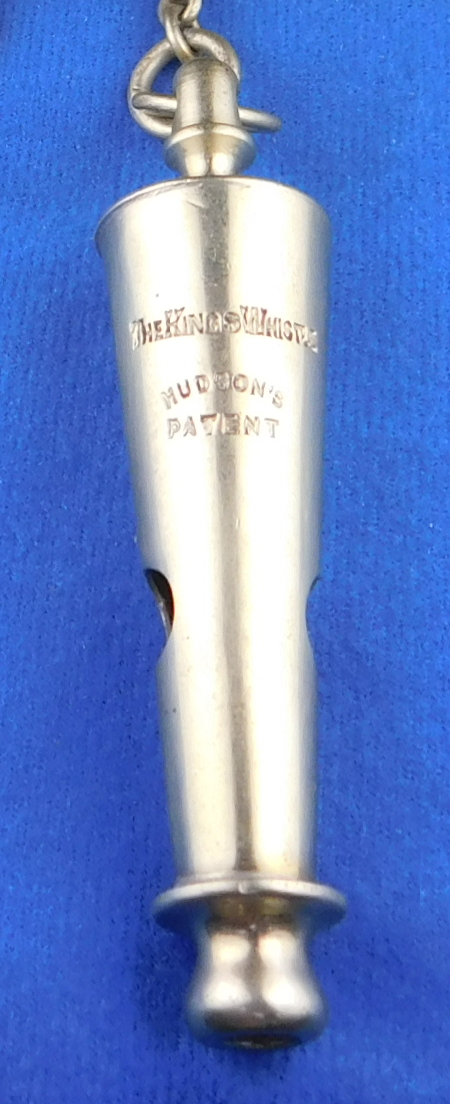 sharp wedge |
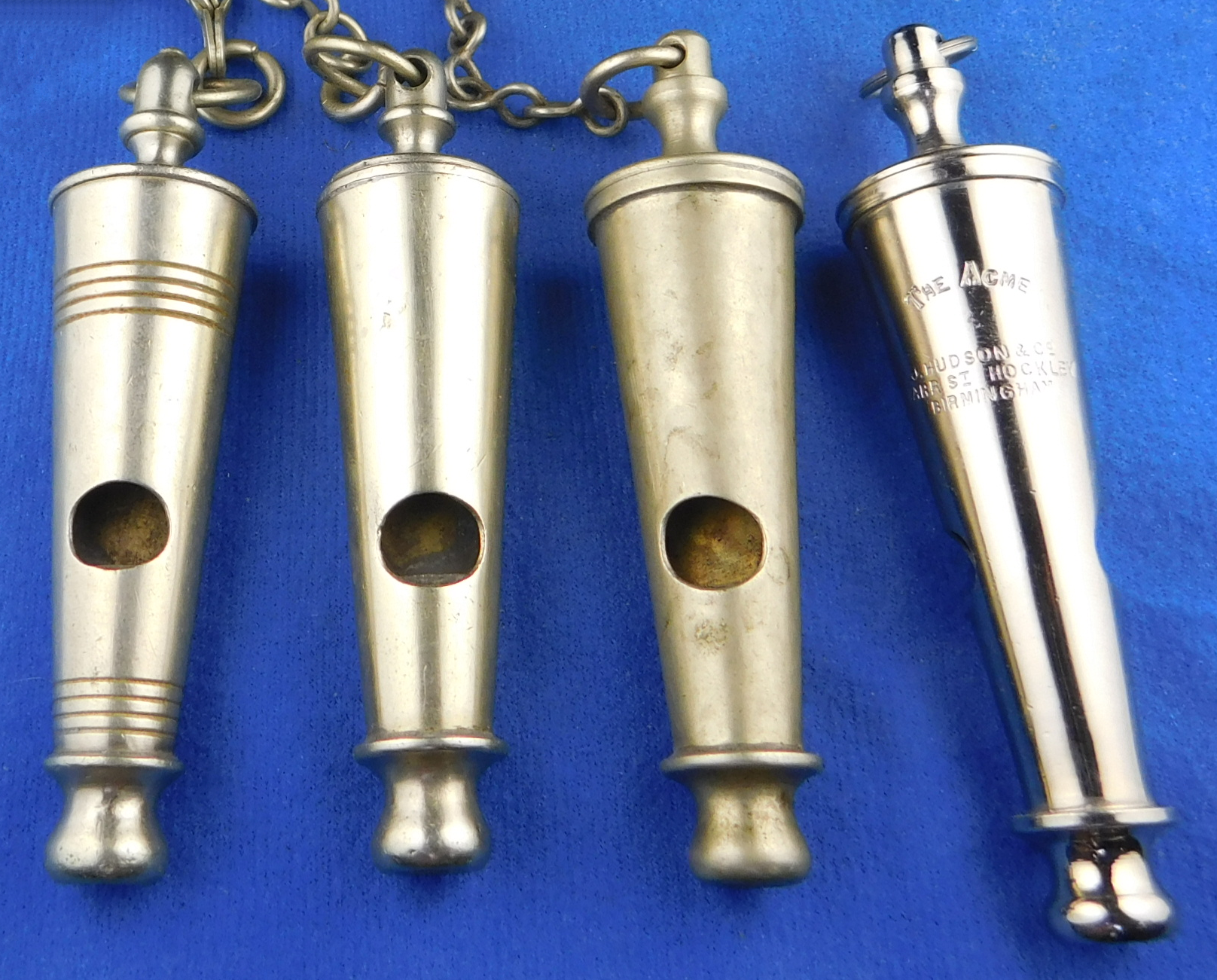
Post 1885 Kings not stamped for patent 435 and still using wedge diaphragms
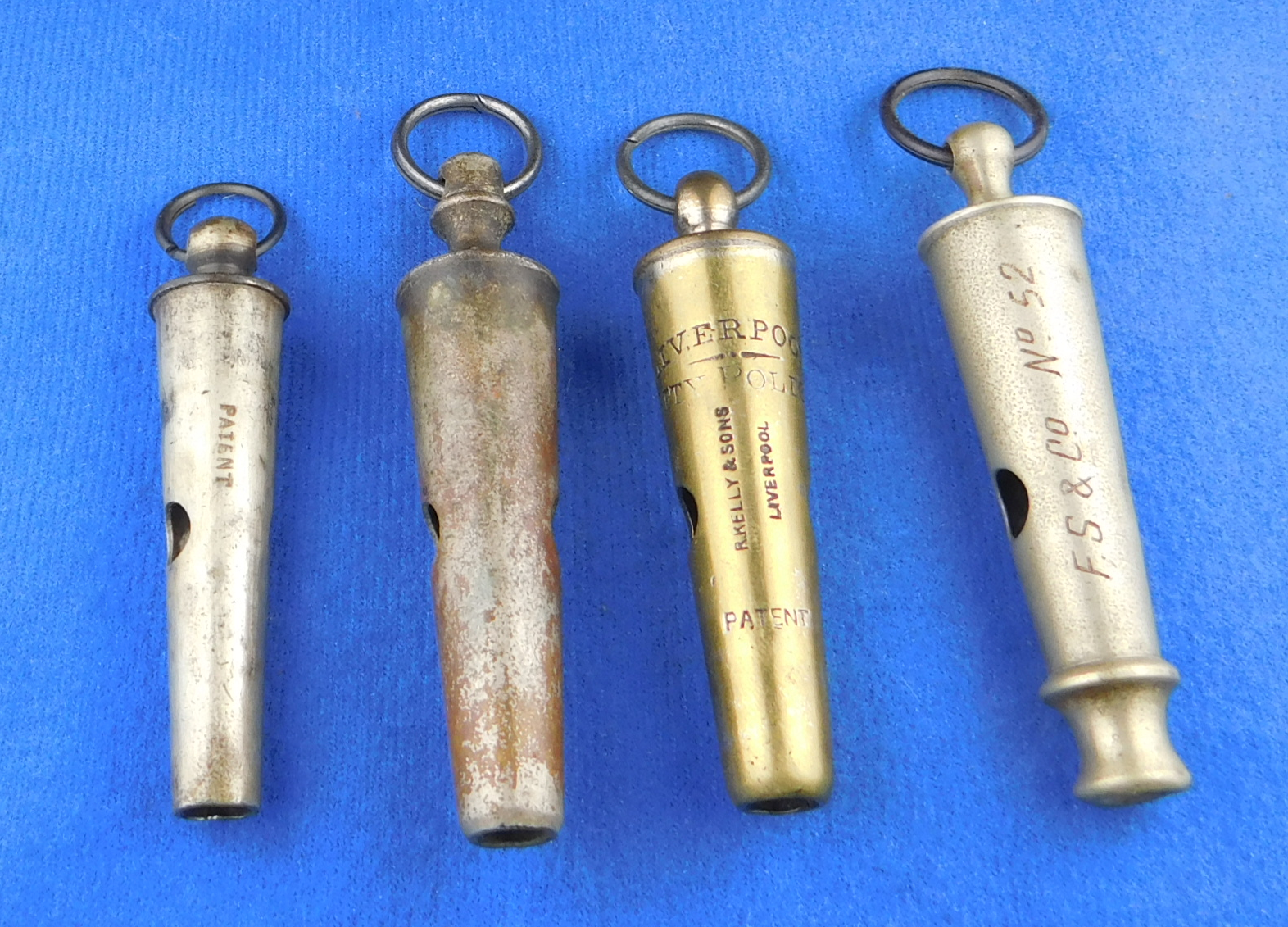
2 Stamped for patent 435 and 2 not, all using patent 435
The following stamped for patent 435 using that flat disc inside, but not in the round, c. 1900
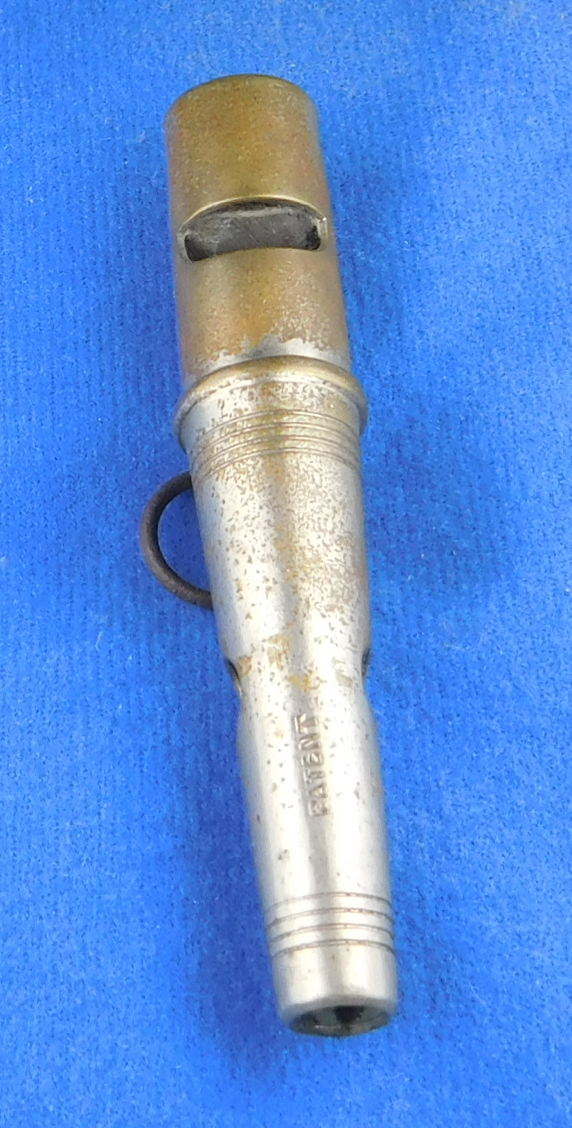
Conclusions:
Only the earliest King whistles used patent 435, although later beaufort/conical whistles did. The patent 435 was developed for tube shaped whistles, however, it was then modified for use in Beaufort/conical whistles, although out of patent design for tube shaped whistles. To note, this was done within the same company as the patent designer J. Hudson.
Whether the flat disc inspired the use of a flat fipple design is not known, but no patent or registered design was filed, also utilized by the same company.
TWG
First Printing October 2, 2023
Edited October 21, 2023
Posted December 9, 2023
Bibliography:
The Whistle Gallery Reference Collection
https://galerie.dpma.de/fussballundtechnik/en/technik/schiedsrichterausruestung/trillerpfeife.html
Collecting Police Whistles, by Simon Topman & Martyn Gilchrist
More Whistles, by Martyn Gilchrist
